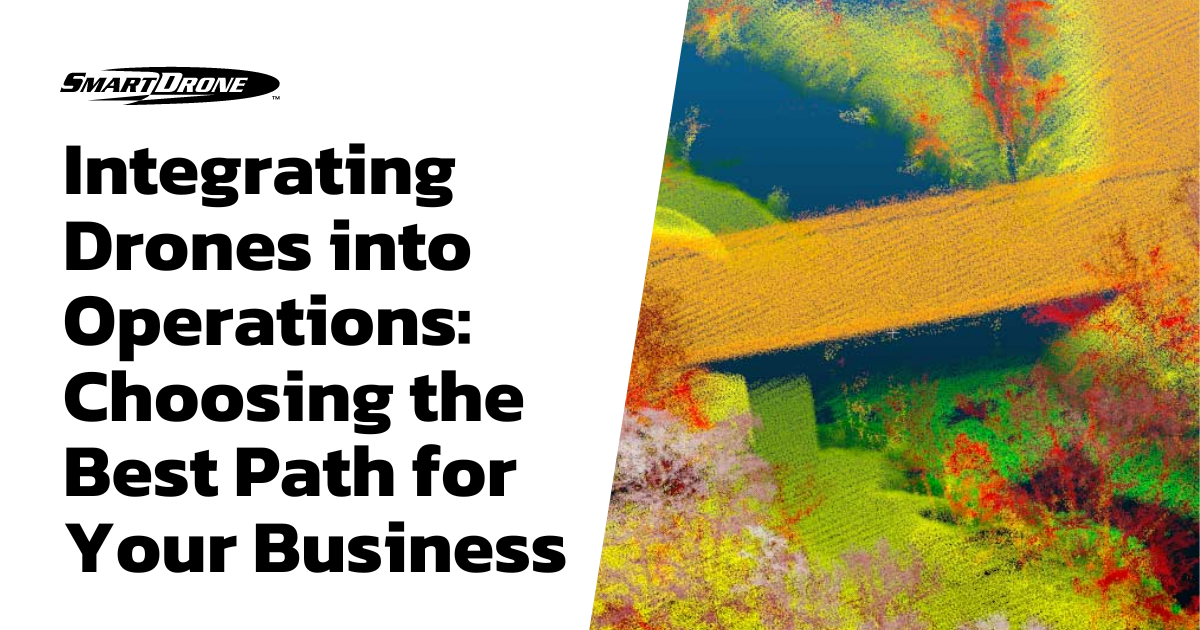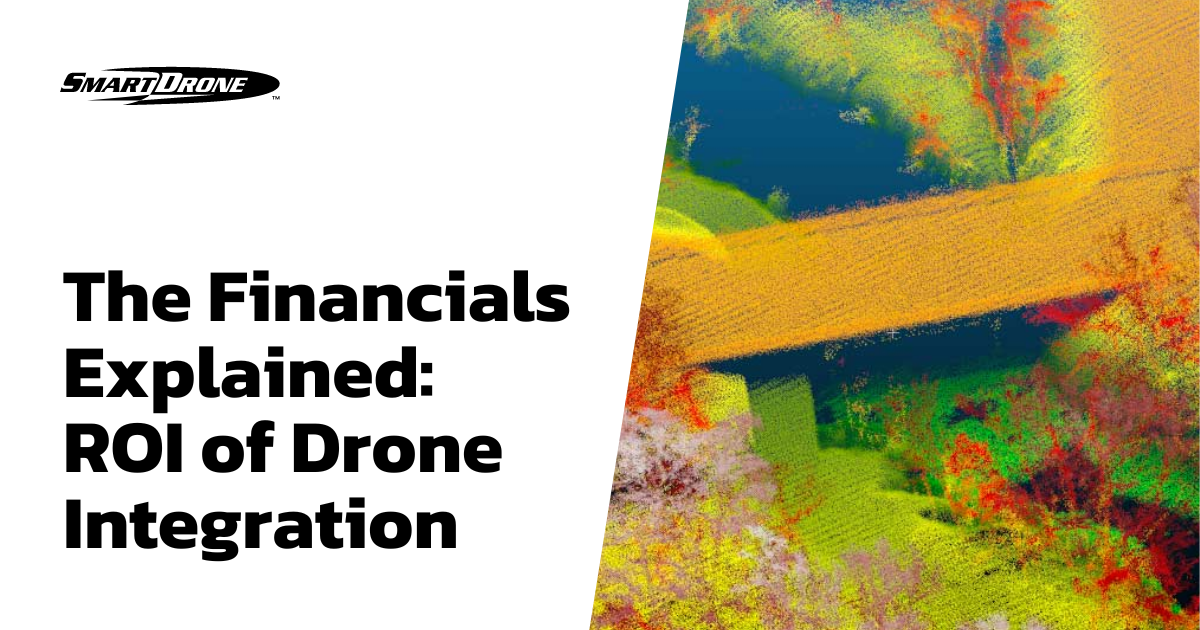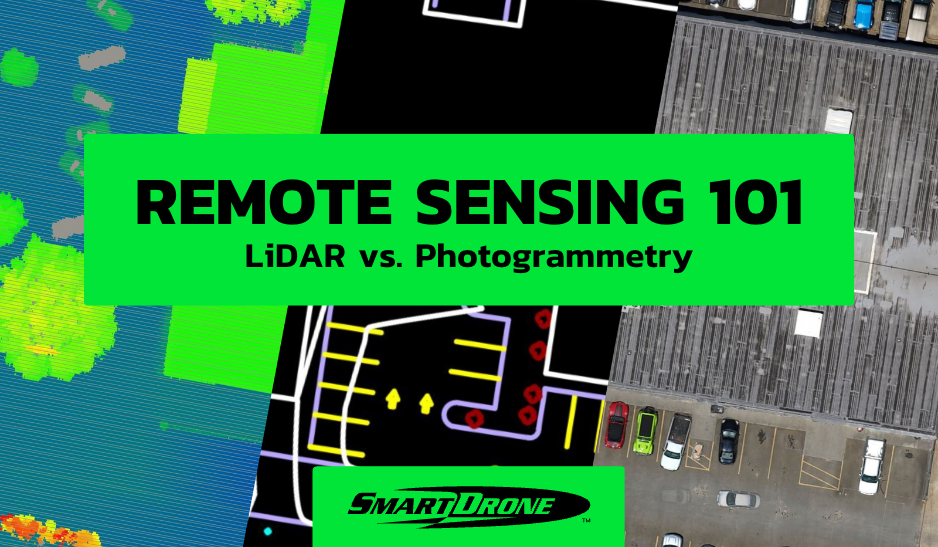Many industries, such as surveying, construction, infrastructure, and mining, are increasingly adopting drone technology to streamline operations, improve accuracy, and reduce costs. Drones equipped with advanced sensors like LiDAR and RGB cameras offer unparalleled capabilities for surveying, mapping, and inspecting construction sites. However, integrating drones into your business can take multiple forms, each with its own set of advantages and considerations. Here, we explore four distinct paths your business can take to harness the power of drones.
👉 Take our Drone Profile Quiz to find out which path is best for you!
1. Purchase, Train, Fly, and Process In-House
In this model, your business purchases a drone, trains and certifies a team member to operate it, and processes the collected data in-house.
Advantages:
• Full Control: You have complete control over the data collection and processing workflows.
• Customization: Tailor the data collection and processing methods to meet specific project needs.
• Cost-Effective in the Long Run: After the initial investment in equipment and training, ongoing costs are limited to maintenance and software subscriptions.
Considerations:
• Upfront Investment: Requires significant initial expenditure on drone hardware, software, and training.
• Learning Curve: Team members need time to become proficient in both flying the drone and processing the data.
• Resource Allocation: Dedicate personnel and time to manage the entire drone operation, which could divert resources from other critical tasks.
2. Purchase, Train, Fly In-House, Contract Out Data Processing
In this approach, your business buys a drone and trains a team member to fly it but contracts out the data processing to a specialized service provider.
Advantages:
• Focus on Core Activities: Your team can concentrate on flying the drone and collecting data, leaving the complex processing tasks to experts.
• Access to Expertise: Leverage the specialized knowledge and advanced processing capabilities of external providers.
• Faster Implementation: Reduces the time required to start using drone data effectively, as processing can be handled by experienced professionals.
Considerations:
• Ongoing Costs: Regular expenses associated with outsourcing data processing.
• Dependency on External Providers: Reliance on third-party services for timely data processing.
• Data Security: Ensure that data sharing with external providers complies with security and confidentiality requirements.
3. Contract Drone Services for Collection, Process Data In-House
Here, your business contracts with a drone service provider to handle the flying and data collection while your team processes the raw data internally.
Advantages:
• Operational Efficiency: Eliminates the need to train and certify your own drone pilots.
• Immediate Access to Data: Receive raw data quickly for internal processing.
• Flexibility: Adapt data processing techniques to meet project-specific requirements.
Considerations:
• Coordination: Effective communication with the drone service provider is crucial to ensure data quality and relevance.
• Processing Capabilities: Ensure your team has the necessary skills and tools to handle complex data processing tasks.
• Scheduling: Dependence on the availability of the drone service provider for data collection.
4. Contract End-to-End Drone Services
This comprehensive solution involves contracting with a drone service provider to manage both the flying and data processing, delivering a complete end-to-end service.
Advantages:
• Hassle-Free Integration: Minimal effort is required from your team, as the service provider handles all aspects of drone operations and data processing.
• Professional Results: Benefit from the expertise and advanced capabilities of specialized drone service providers.
• Time-Saving: Rapid deployment and quick turnaround times for processed data.
Considerations:
• Cost: Typically, the most expensive option due to the comprehensive nature of the service.
• Vendor Dependence: High reliance on the service provider for both data collection and processing.
• Data Ownership: Clarify terms regarding data ownership and access rights with the service provider.
Choosing the Right Path for Your Business
Deciding on the best approach to integrating drones into your operations depends on several factors, including your budget, internal capabilities, project requirements, and long-term strategic goals. Here’s a quick summary to help guide your decision:
• For Maximum Control and Customization: Opt for the in-house model where you manage both flying and processing.
• For a Balanced Approach: Consider flying the drone in-house and outsourcing data processing.
• For Immediate Implementation: Use a drone service provider for flying while handling data processing internally.
• For Turnkey Solutions: Choose an end-to-end service from a drone service provider.
By carefully evaluating these options, businesses can effectively leverage drone technology to enhance their operations, improve project outcomes, and stay competitive in a rapidly evolving industry.
Looking to integrate drones into your operations? SmartDrone offers many paths to drone integration through our US-made drone LiDAR technology and nationwide drone services.




.jpg)